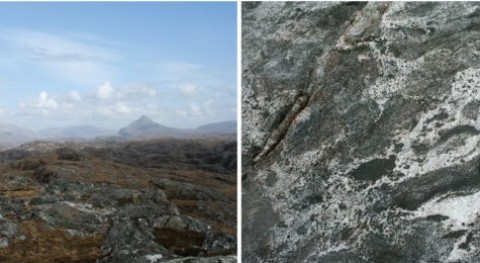Curtin University research has developed a new and easier on-site method to immediately and accurately detect and measure levels of PFAS, which are persistent environmental pollutants sometimes found in contaminated lands and waters around the industrialised world.
Professor Damien Arrigan, from the School of Molecular and Life Sciences at Curtin University, explained PFAS (per- and polyfluorinated alkyl substances) are potentially harmful chemical materials that were used for a long time in various commercial and industrial applications, including in firefighting foams, some non-stick cookware, stain and water resistant coatings on carpet and clothing, and various paper and packaging products.
“As a result of their widespread use, many groundwater and soil sites around the world are contaminated with these materials, which are often referred to as ‘forever chemicals,’ because they don’t breakdown or degrade in the natural environment,” Professor Arrigan said.
“The only way to prevent them entering the food chain, is to minimise or remove the chemicals from the environment – making early detection a highly desirable part of this removal process.”
Typically speaking, to find out if a site or body of water is contaminated with PFAS materials, soil or water samples must be taken from a site and then taken to a laboratory for chemical analysis, a process which may take several days.
The Curtin research, in collaboration with Universidad Nacional de Córdoba, Argentina, sought to improve this process by using on-site chemical sensors which allow an instant contamination test that immediately indicates which water samples should be collected and sent to a lab for a more detailed chemical analysis.
“The chemical sensors we developed use electrodes to push ionised PFAS across an oil-water interface, or ‘boundary,’ using special glass membranes with microholes. This process changes the electrical properties of the interface and gives us an electrical current that tells us about the concentration of substances,” Professor Arrigan said.
“This method allows us to not only detect the presence of perfluorooctane sulfonate, one of the most widely used PFAS, but also measure it at very low concentration levels – lower than the concentration values set for safe limits of this substance in drinking water.
“Our preliminary results show that with our new method, it is possible to immediately detect very small concentrations of PFAS substances in waters, without the need to send the samples offsite for initial analysis.
“With appropriate development into a more portable, robust technology, this method could potentially be used by industry and government agencies, and the general public, to monitor PFAS concentration in water and soils and get results within minutes, rather than days.”
The full research paper, Detection of perfluorooctane sulfonate by ion-transfer stripping voltammetry at an array of microinterfaces between two immiscible electrolyte solutions, was published in the journal Analyst and can be found online here.







